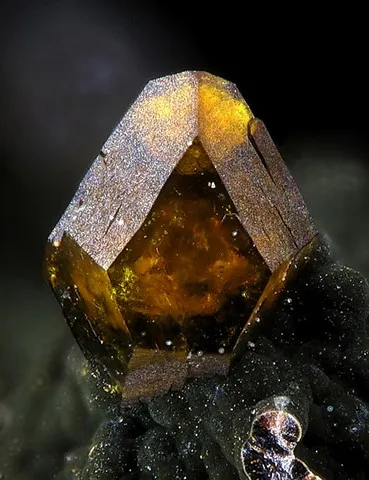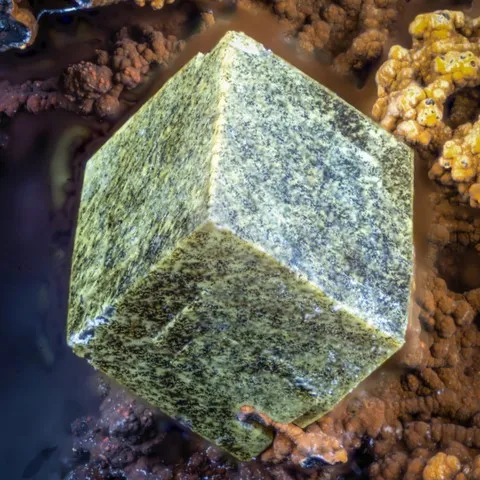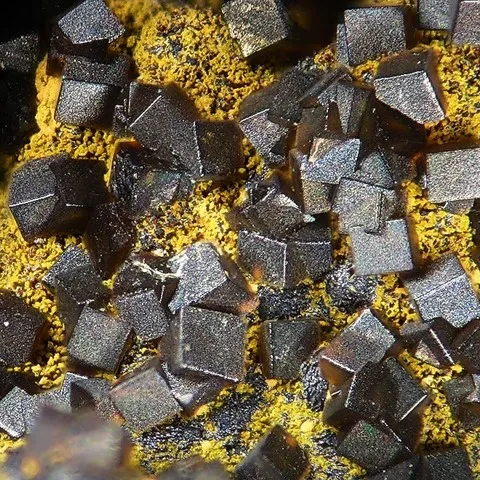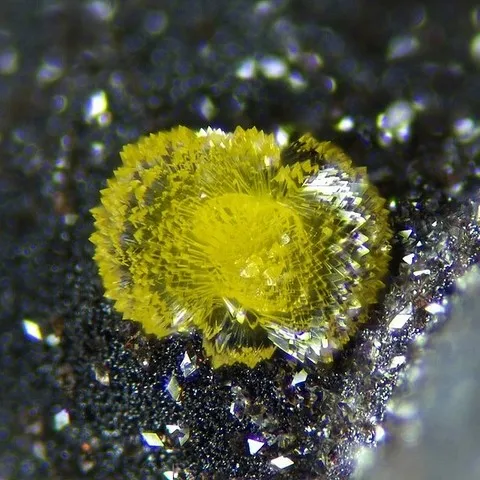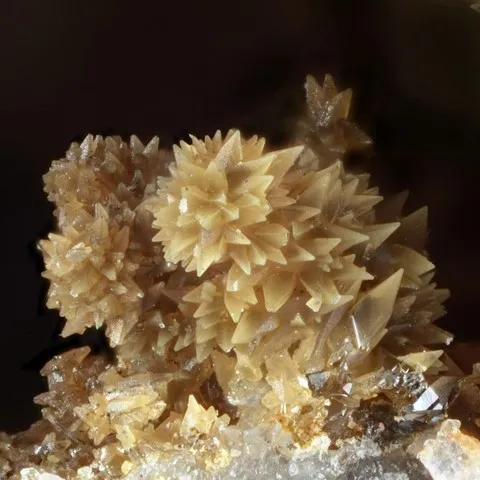CORKITE
Class : Phosphates, arsenates, vanadates
Subclass : Anhydrous phosphates
Crystal system : Rhombohedral
Chemistry : PbFe3(PO4)(SO4)(OH)6
Rarity : Uncommon
Corkite is a complex phosphate of iron and lead comprising frequent groups (SO4) replacing groups (PO4), which leads some authors to consider it as a sulphate. It is a secondary mineral formed in the supergene oxidation zone of hydrothermal base metal deposits, where it accompanies many secondary base metal minerals, notably lead (cerussite, pyromorphite, etc...). It owes its name to its location of discovery : the Glandore iron mine in County Cork (Ireland). It forms pseudocubic rhombohedral crystals not exceeding 2 mm, and aggregates or powdery crusts of pale yellow, pale green to dark green or sometimes yellow-brown to brown.
Main photo : Corkite from Schöne Aussicht Mine, Germany © Christian Rewitzer
Corkite in the World
Twinning
No twin known for this mineral species.
Fakes and treatments
No fake identified for this mineral species.
Hardness : 3.5 to 4.5
Density : 4.29
Fracture : -
Streak : -
TP : Transparent to translucent
RI : 1.93 to 1.96
Birefringence : 0.030
Optical character : Uniaxial -
Pleochroism : None
Fluorescence : None
Solubility : Hydrochloric acid
Magnetism : None
Radioactivity : None

